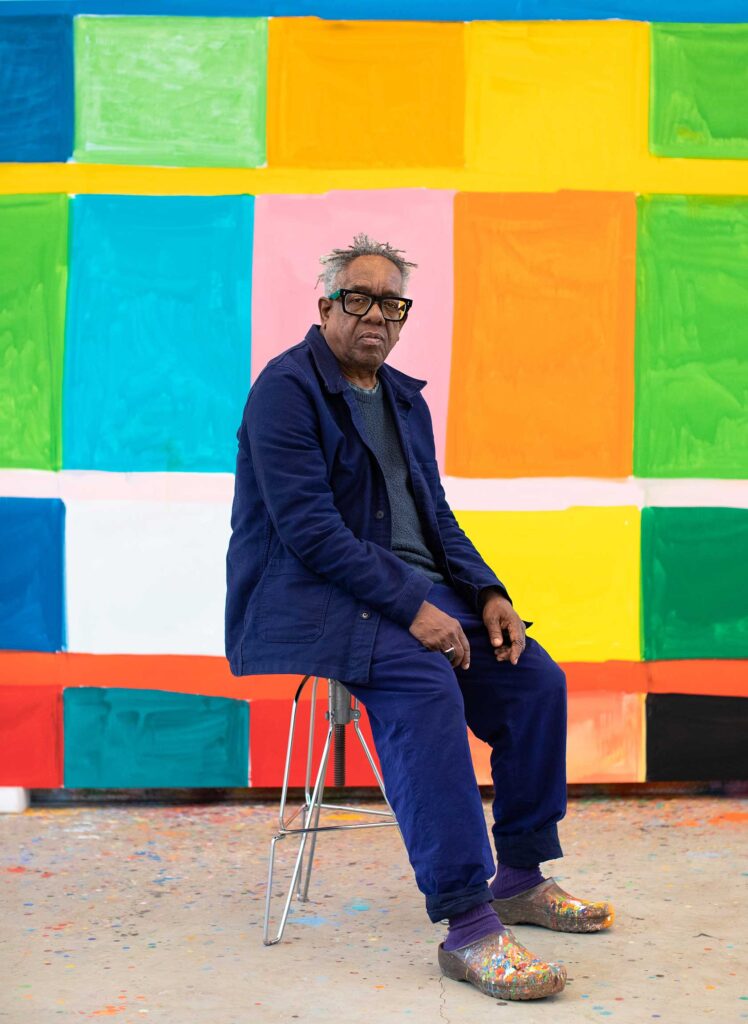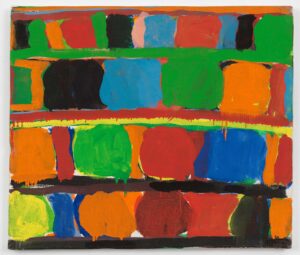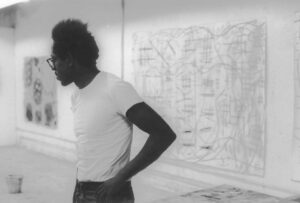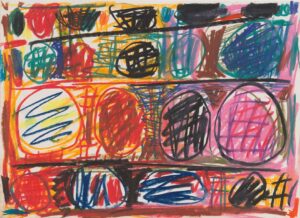
Painter Stanley Whitney found freedom in restriction. In his first retrospective exhibition “Stanley Whitney: How High the Moon” at the ICA Boston, viewers can see how the artist found his signature structure of colored blocks and the way he has explored that structure for decades.
The exhibition features more than 100 works spanning five decades, beginning with his early, more representational sketches and paintings and moving up to recent works. A selection of his sketchbooks is also on view, offering insight into his process and politics.

“Untitled,” 1997. Oil on linen. Private Collection. Artwork © Stanley Whitney. PHOTO: ROBERT MCKEEVER, COURTESY OF STANLEY WHITNEY STUDIO
Color is paramount for Whitney. All his paintings are different ways of seeing and experiencing color. In the early days he played around with figurative work and different abstractions, which are shown in the first few galleries of the exhibition. But by 2002 he had a found a geometric system of blocks that suited his purpose, and he still paints in that style to this day.
“Like the 1940 song, penned by Nancy Hamilton and Morgan Lewis, that inspired the exhibition’s title, ‘Stanley Whitney: How High the Moon’ conveys feelings of enchantment through the artist’s consistent yet wholly expansive paintings,” said Ruth Erickson, the ICA’s Barbara Lee Chief Curator and director of curatorial affairs. “Whitney’s abstractions create a space for viewers to focus on their wide-ranging responses to color, rather than a specific subject.”

Stanley Whitney in his studio at Cooper Square, ca. 1980–82. Photo: Courtesy of Stanley Whitney Studio.
Whitney’s work was influenced by the fabric of the world he lived in. Music, especially jazz, was always playing in his house growing up and his experiences in New York City during the 60s and 70s had a profound impact in terms of experiencing live music and poetry and seeing abstract works made by contemporaries. Whitney says he always listens to music while he works, and some paintings are named after performers or songs.
“I grew up in Philadelphia and in the Black community music was everything,” said Whitney. “I went to jazz clubs; I listened to music a lot. I was just trying to make my own recipe for what painting is.”
That recipe comes in the form of four rows of colored blocks. The rows are often divided by thick horizontal lines. The colors of the blocks and the size of the rows vary per painting, but the rigid format allows Whitney, and the viewers, to focus solely on the colors. Rather than becoming restrictive, this pattern allows for a deep inspection of the basics of construction: color, shape, scale and brushstrokes.

Stanley Whitney (American, born 1946). Untitled, 1991. Crayon on paper. 9 x 12 1/2 inches (22.9 x 31.8 cm). Private Collection. Photo: Robert McKeever, courtesy of Stanley Whitney Studio. Artwork © Stanley Whitney
“Stanley Whitney: How High the Moon” is on view at the ICA Boston through September 1. Admission to the ICA is free every Thursday evening after 5p.m.
Whitney was prolific from a young age, filling hundreds of sketchbook pages and painting every day. But his work is only now getting the recognition that many of his contemporaries received years ago.
“Like many African American artists, attention to his work came late,” said Cathleen Chaffee, Charles Balbach Chief Curator at the Buffalo AKG Art Museum where the exhibition was organized. “He was always showing. He’s always really been exhibiting, but he still supported himself full time through teaching up until just a handful of years ago.”
In many ways this parallels the experience of Roxbury native artist John Wilson, who worked as a teacher at Boston University for several decades. The largest exhibition of his work ever shown is currently on view at the Museum of Fine Arts, Boston. Though Wilson and Whitney made very different kinds of work, they are both important Black artists, masters of their craft, who are finally getting their flowers.







